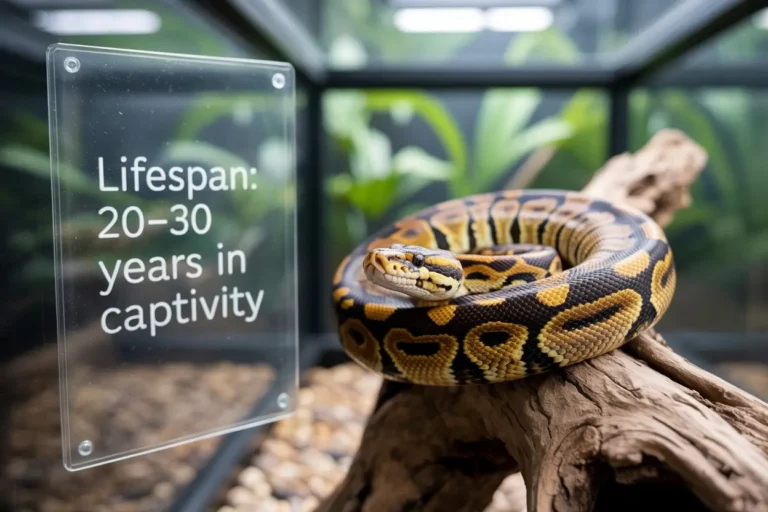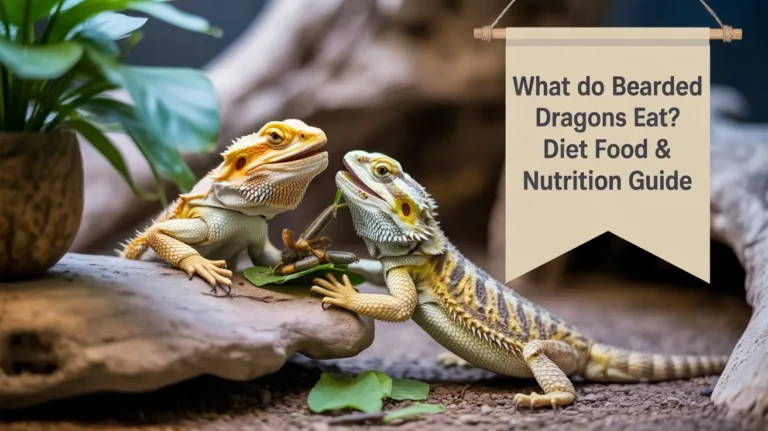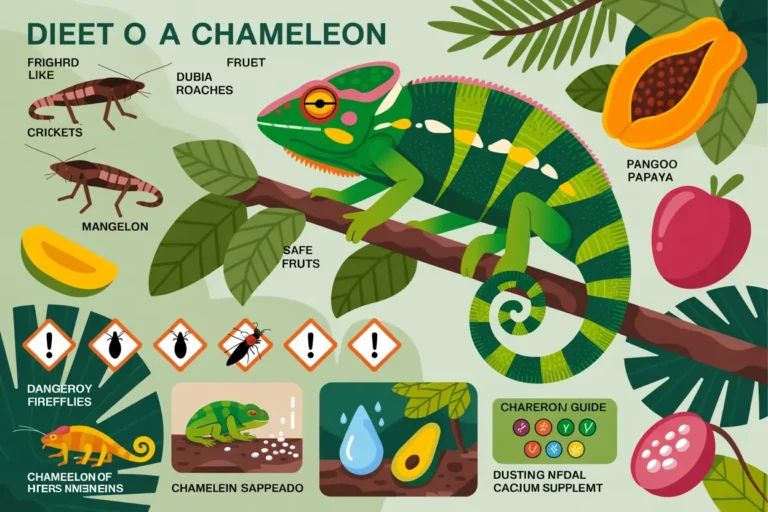Ball Python (Python Regius): A Complete Guide
The Ball python, also known as the Royal python, is a non-venomous species native to sub-Saharan Africa and is celebrated for its manageable size, docile temperament, and adaptability to captivity. Its name “ball python” stems from its instinct to curl into a tight coil when threatened, while the alternate name “royal python” is said to originate from ancient African rulers, including Cleopatra, who wore them as jewelry. This species has gained immense popularity as a pet and continues to fascinate reptile enthusiasts and breeders around the world.
Appearance and Physical Traits
Ball pythons are medium-sized snakes, typically measuring between 4 to 5 feet in length, though some may reach up to 6 feet. They are known for their thick, muscular bodies, small heads, and smooth scales. The standard wild-type pattern features a black or dark brown base color with gold or light brown dorsal blotches, and a white to cream belly often marked with scattered black spots. Over 6,500 morphs—color and pattern variations—have been developed in captivity, including pastel, albino, Mojave, and lesser morphs.
Unique anatomical features include a quadrate bone that allows their jaws to stretch wide, heat-sensing pits for detecting warm-blooded prey, and a flickering tongue that enhances their sense of smell.
Natural Habitat and Behavior
Ball pythons inhabit the grasslands, savannas, and open forests of sub-Saharan Africa. They are nocturnal, preferring to hunt at night and spend daylight hours hiding under leaf piles, logs, rocks, or in abandoned mammal burrows. Males are more semi-arboreal, occasionally climbing trees, whereas females remain mostly terrestrial.
These snakes are known for their non-aggressive nature. When threatened, they coil into a defensive ball with their head hidden in the center. This behavior is not only a survival tactic but also a reason for their popularity among pet owners.
Lifestyle and Adaptations
- Lifestyle: Solitary, nocturnal, burrowing, and ambush predator
- Group Names: Den, nest, pit, bed, knot
- Seasonal Behavior: Aestivates during hot, dry seasons; not migratory
- Domestication Status: Semi-domesticated
In the wild, ball pythons use their ability to sense heat to locate prey in the dark, striking with precision and constricting their food before swallowing it whole.
Diet and Feeding Habits
Ball pythons are obligate carnivores. In their native habitat, their diet includes small mammals and birds such as African soft-furred rats, shrews, gerbils, striped mice, and chicks. Their jaw structure allows them to consume prey up to twice the width of their head.
Common Prey in the Wild:
| Mammals | Birds |
| Shrews | Chicks |
| Gerbils | Small wild birds |
| Rats | — |
| Jerboas | — |
In captivity, ball pythons are typically fed rodents such as mice and rats. Feeding should match the snake’s age, size, and health. Juveniles eat weekly, while adults may eat every 10–14 days. Learn more in our detailed ball python diet and feeding tips guide.
Reproduction and Mating Behavior
Ball pythons are polygynandrous, meaning both males and females mate with multiple partners. Their breeding season spans from mid-September to mid-November. Females lay between 3 to 11 eggs, with 4 to 6 being most common.
- Incubation Period: 55–60 days
- Pregnancy Duration: 44–54 days
- Reproductive Age: Males at 11–18 months (600g+), females at 20–36 months (1500g+ ideal)
- Offspring Name: Snakelet
- Parental Care: Ends after hatching
Females incubate eggs using a “shivering” motion to regulate temperature. Once hatched, young are independent from birth.
Ecological Importance
In the wild, ball pythons play an essential role in regulating populations of small mammals and birds, contributing to ecological balance. As ambush predators, they help control pests that can damage crops or spread disease.
Domestication and Morph Breeding
Ball pythons are among the most commonly bred snakes in captivity. Their calm demeanor and manageable size make them ideal for reptile hobbyists. Breeders selectively pair snakes to produce designer morphs, creating unique and often visually striking combinations. Today, the morph market includes over 6,500 distinct varieties.
Pros and Cons of Ball Pythons as Pets
Pros:
- Docile Temperament: Rarely aggressive and easy to handle
- Manageable Size: Typically 3–5 lbs, 4–5 feet long
- Longevity: Can live up to 20 years or more in captivity
Cons:
- Specialized Care Required: Enclosures must meet specific humidity, temperature, and size requirements
- Still Wild at Heart: Despite being captive-bred, they retain wild instincts
- Not for Reintroduction: Captive-bred snakes often lack survival skills for the wild
Population Status and Threats
According to the IUCN Red List, ball pythons are currently listed as Least Concern. However, their population faces significant threats from over-collection for the pet trade and hunting for food and leather. Large-scale exports have raised concerns about local population depletion.
Final Thoughts
Ball pythons are captivating reptiles with unique adaptations and a calm demeanor that makes them ideal companions for reptile enthusiasts. Whether admired for their natural behavior, diverse morphs, or ecological role, these snakes are a testament to the fascinating world of herpetology. However, their care requires commitment, responsibility, and respect for their wild roots. With proper knowledge and ethical breeding practices, ball pythons can thrive both in captivity and in their native environment.






